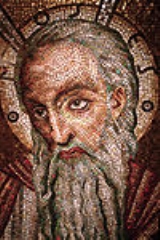
and Qur'an
, a religious leader, lawgiver and prophet
, to whom the authorship
of the Torah
is traditionally attributed. Also called Moshe Rabbenu in Hebrew ' onMouseout='HidePop("82592")' href="/topics/Literal_translation">Lit.
"Moses our Teacher/Rabbi"), he is the most important prophet in Judaism
, and is also considered an important prophet in Christianity
and Islam
, as well as a number of other faiths.
The existence of Moses as well as the veracity of the Exodus story is disputed amongst archaeologists
and Egyptologists, with experts in the field of biblical criticism
citing logical inconsistencies, new archaeological evidence, historical evidence, and related origin myths
in Canaan
ite culture.
I have been a stranger in a strange land.![]()
I will now turn aside, and see this great sight, why the bush is not burnt. ![]()
What you say, happens.![]()
Who am I, that I should go unto Pharaoh, and that I should bring forth the children of Israel out of Egypt?![]()
O my LORD, I am not eloquent, neither heretofore, nor since thou hast spoken unto thy servant: but I am slow of speech, and of a slow tongue.![]()
What shall I do unto this people? they be almost ready to stone me. ![]()
Fear not: for God is come to prove you, and that his fear may be before your faces, that ye sin not. ![]()
I pray thee, if I have found grace in thy sight, shew me now thy way, that I may know thee, that I may find grace in thy sight: and consider that this nation is thy people. ![]()

